We use cookies, along with some third-party sites (like Google, Facebook, etc.). By continuing to visit this site you agree to our use of cookies.


- Search Yachts
- Destinations
- Company
- Sailing info
- Blog
Need help? Contact us
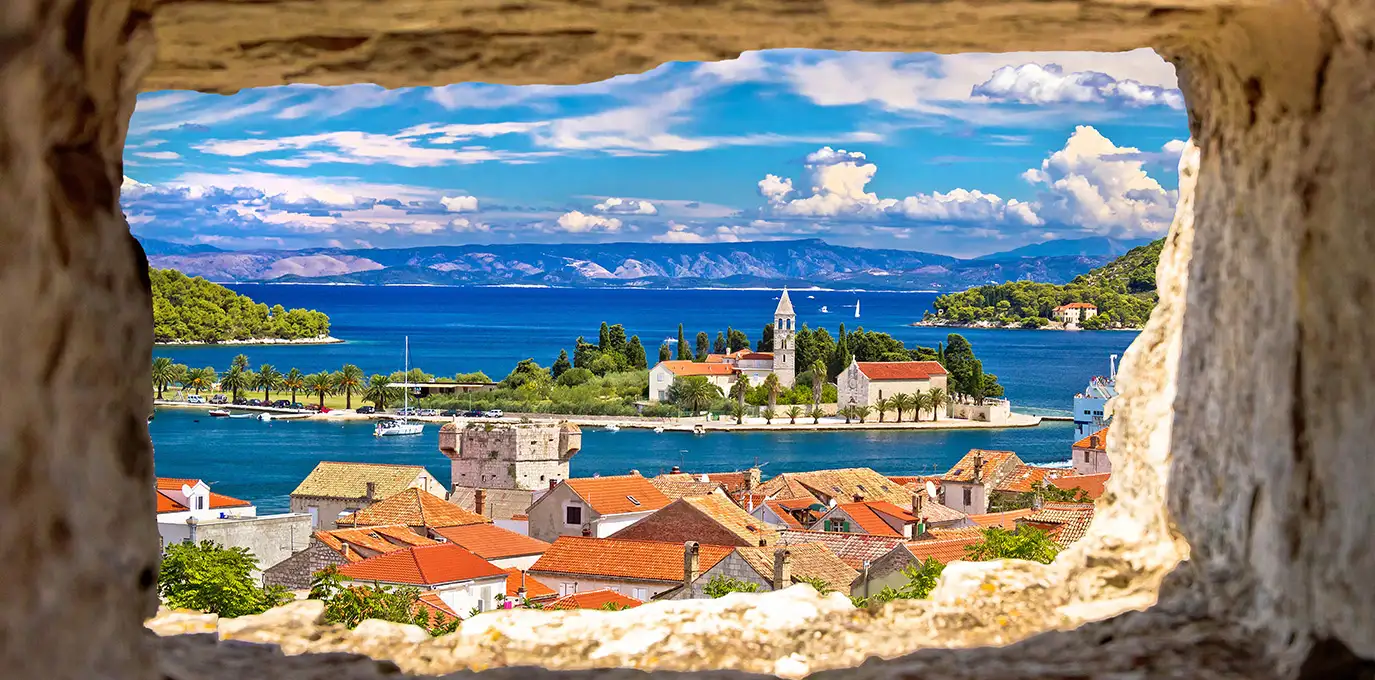
To start this route we suggest first visiting Trogir (to the north of Split), or Necujam on the island of Solta. Trogir is one of the most beautiful and best-preserved towns in Dalmatia. Some people say it is even more beautiful than Dubrovnik.
The oldest part of the Trogir town is on a small island between the mainland and the island of Ciovo. Sailing in on your left side you will see the famous fort, Kamerlengo.
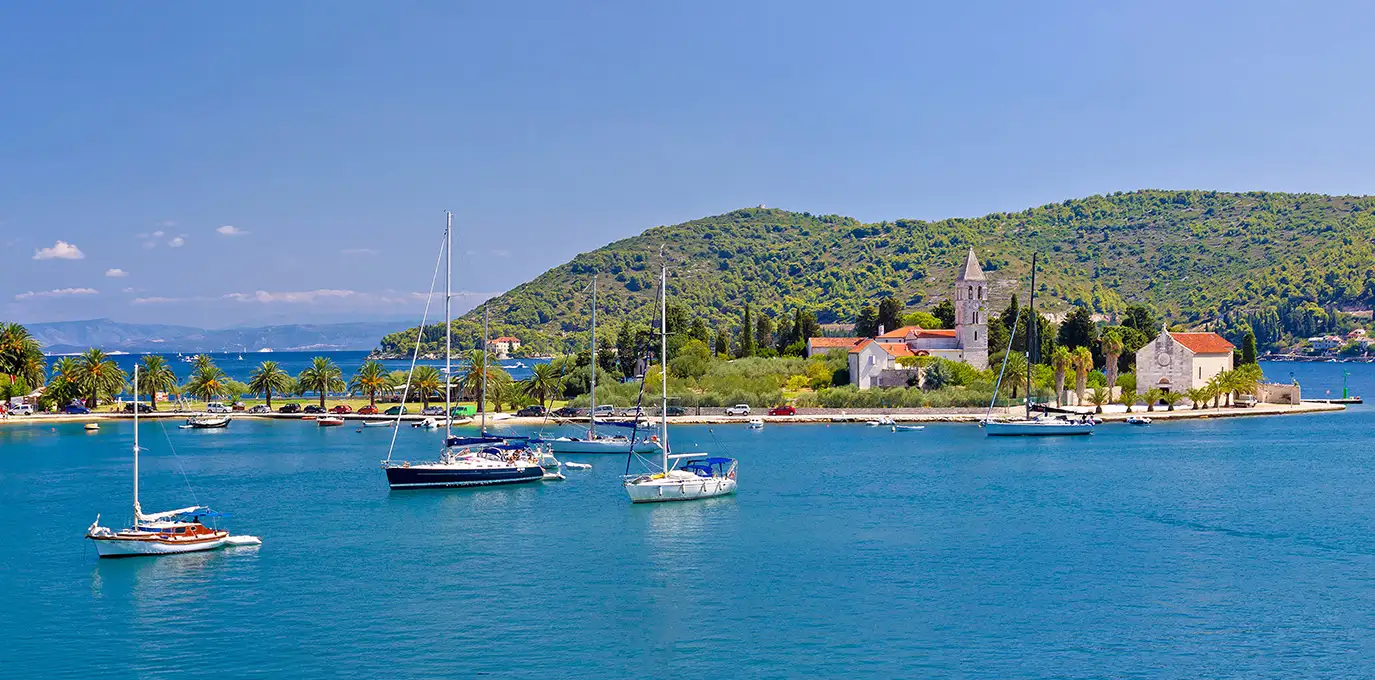
The farthest island of middle Dalmatia is Vis, famous for its clear sea and protected underwater world, rich in sunken ships and miraculous flora and fauna. Due to a large number of hidden bays, and oases of peace that are hard to reach, it is a real paradise for sailors.
Vis is a historical monument in its entirety because of the many preserved facilities (remnants of the Antique town of Issa, Roman spa, Issa necropolis, summer houses, churches, Tito’s cave).
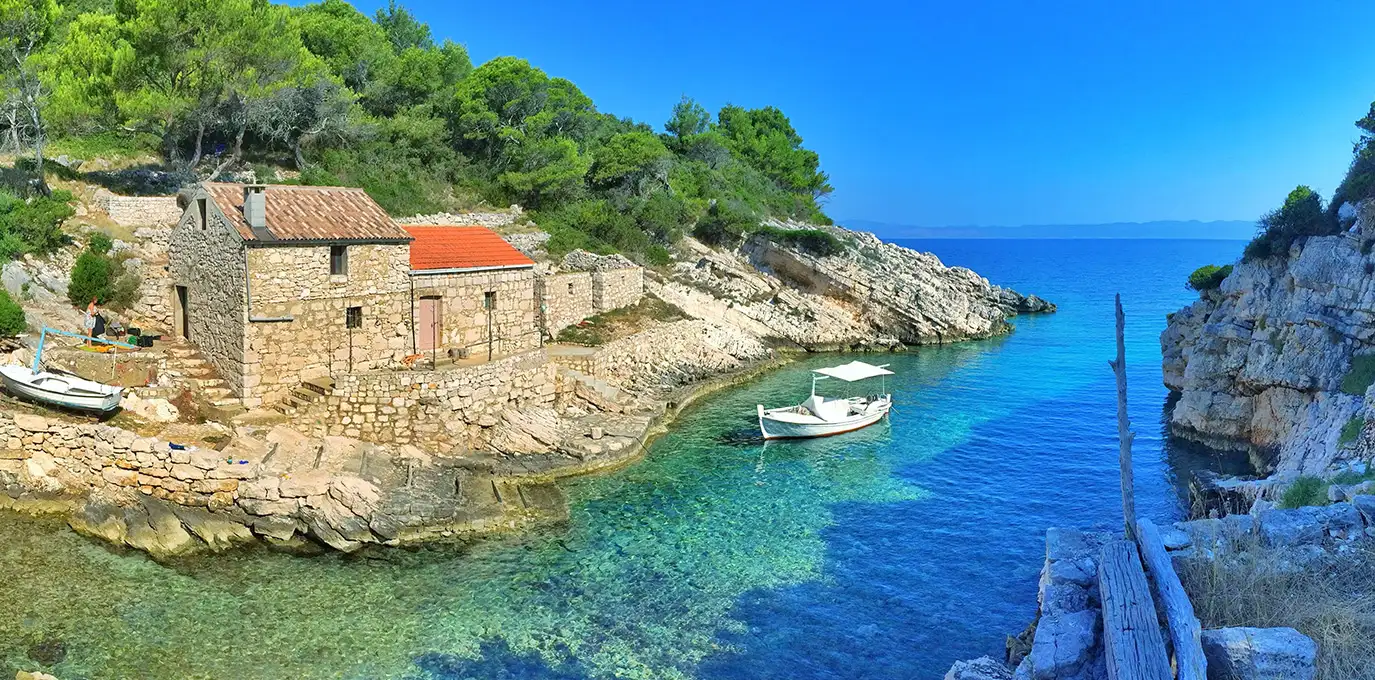
The Lastovo Archipelago was declared a nature park by the Croatian Parliament on 29 September 2006. It is the eleventh Nature park in Croatia.
The Park consists of 44 islands, islets, rocks, and reefs (the largest of them are Lastovo and Sušac) covering a total area of 53 square kilometers of land and 143 square kilometers of sea. Its borders are lit by the stone lighthouses of Sušac, Tajan, Glavat, and Struga.
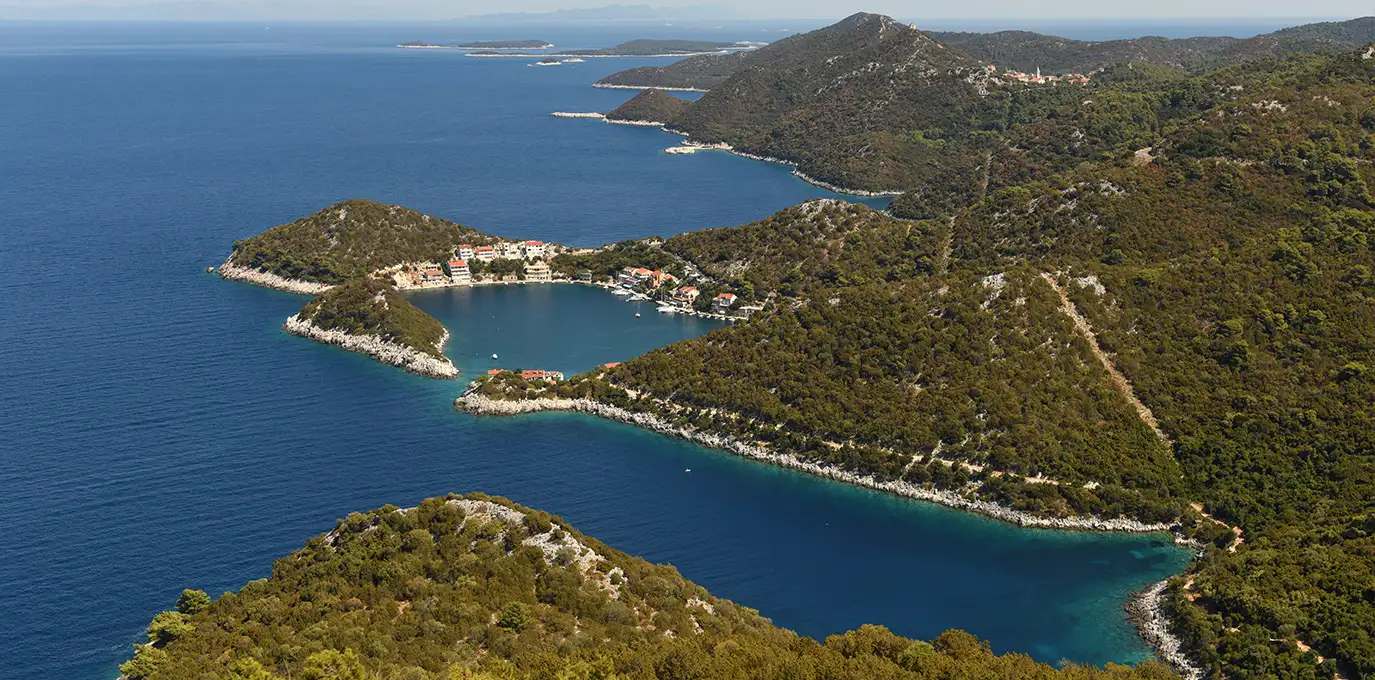
The Lastovo Archipelago was declared a nature park due to its mystic beauty, immense landscape value, thick forests and fertile fields rich with ponds, high coastal cliffs, land and sea caves, and numerous rare sea and land species, and habitats.
The Lastovo Archipelago has a rich cultural and historical heritage – numerous stone churches and chapels, picturesque chimneys, and the traditional Lastovo Carnival, but one must not forget the local inhabitants, who prove that the coexistence of man and nature is possible with developed environmental awareness.
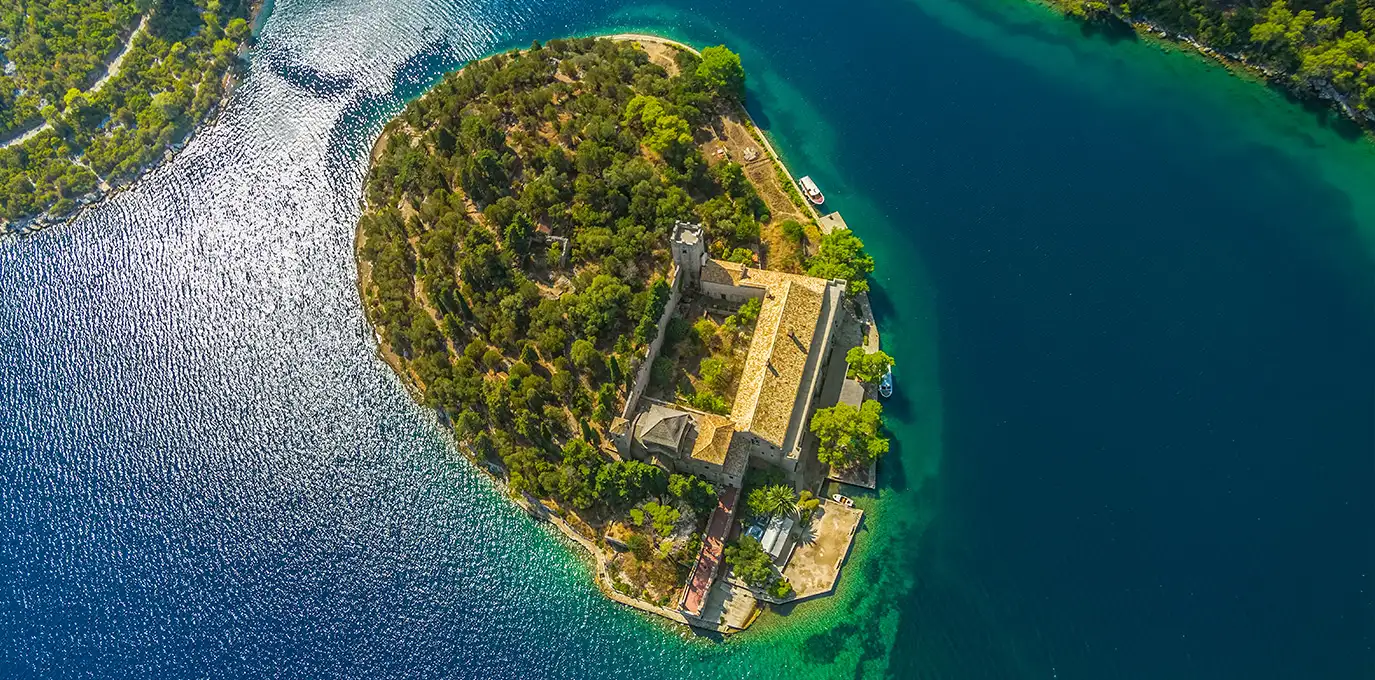
According to the descriptions in Homer's epic tale of The Odyssey, many explorers and experts consider Mljet to be the island of Ogygia - the beautiful island where the nymph Calypso held Odysseus for 7 years. The name of the island itself speaks of its beauty, which is derived from the Greek word "melite nesos" which means „honey island“.
National Park Mljet was declared as such in the year 1960 and encompasses the west part of the island of Mljet. The main factors in declaring the island as a national park are the rare and intended coast and the dense flora, specifically the forested area on the south side of the island, which creates two lakes on the island. Although the water is salty, the landscape looks like a lake. They are rich in many seashells (mussels, oysters, etc), and the plankton of the island has been the study of multiple scientific researches.
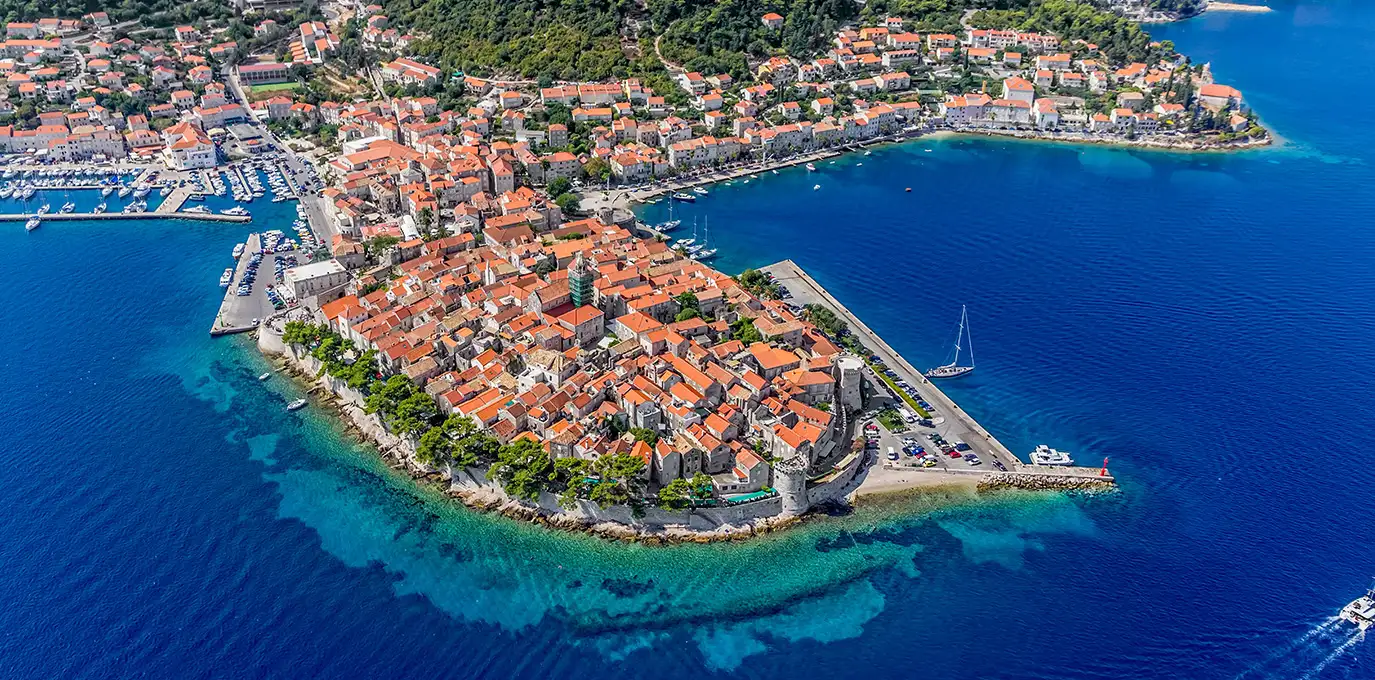
Korcula the birthplace of Marco Polo was built on the foundations of a Greek colony and is the historical and tourist center of the largest island in the Dubrovnik region. It is famous for its streets that are shaped in the form of a fishbone and well-preserved Gothic and Renaissance buildings.
Among them stands out the Cathedral of sv. Marko [St. Mark], whose rich interior guards the works of great Italian painters. The people of Korčula have preserved their customs and the medieval knight’s game “Moreška” that takes place on the town streets. The gentle Mediterranean cuisine will challenge the palates of even the most fastidious gourmets.
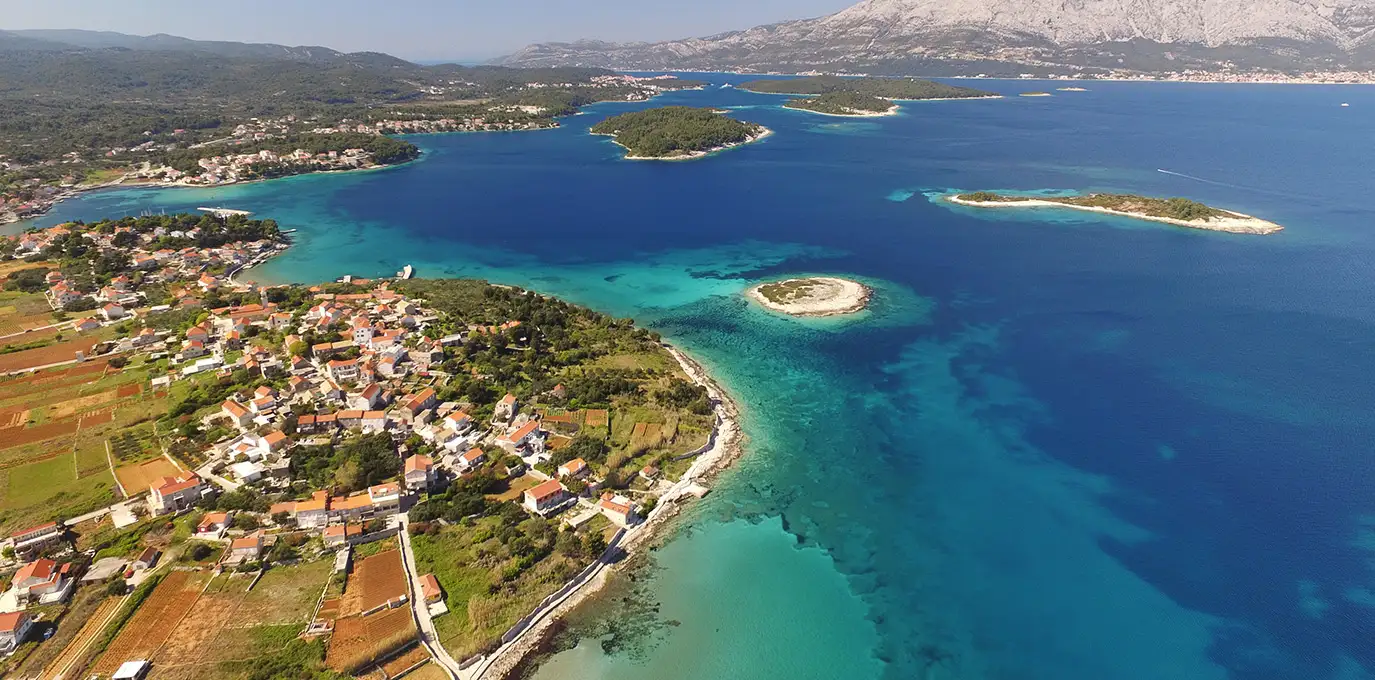
Along with the gifts of the sea (mussels, fish, crabs), delicious desserts such as Cukarin, the Dubrovnik cakes rožata, and klašun go very well with the local Korčula wines - Grk, Pošip, Plavac, and Rukatac.
Near the town of Korčula, there is an archipelago of 20 uninhabited islands covered with dense thickets and an accessible coastline. Here is also the slightly larger islet of Badija with its pebble beaches and beautiful Franciscan monastery.
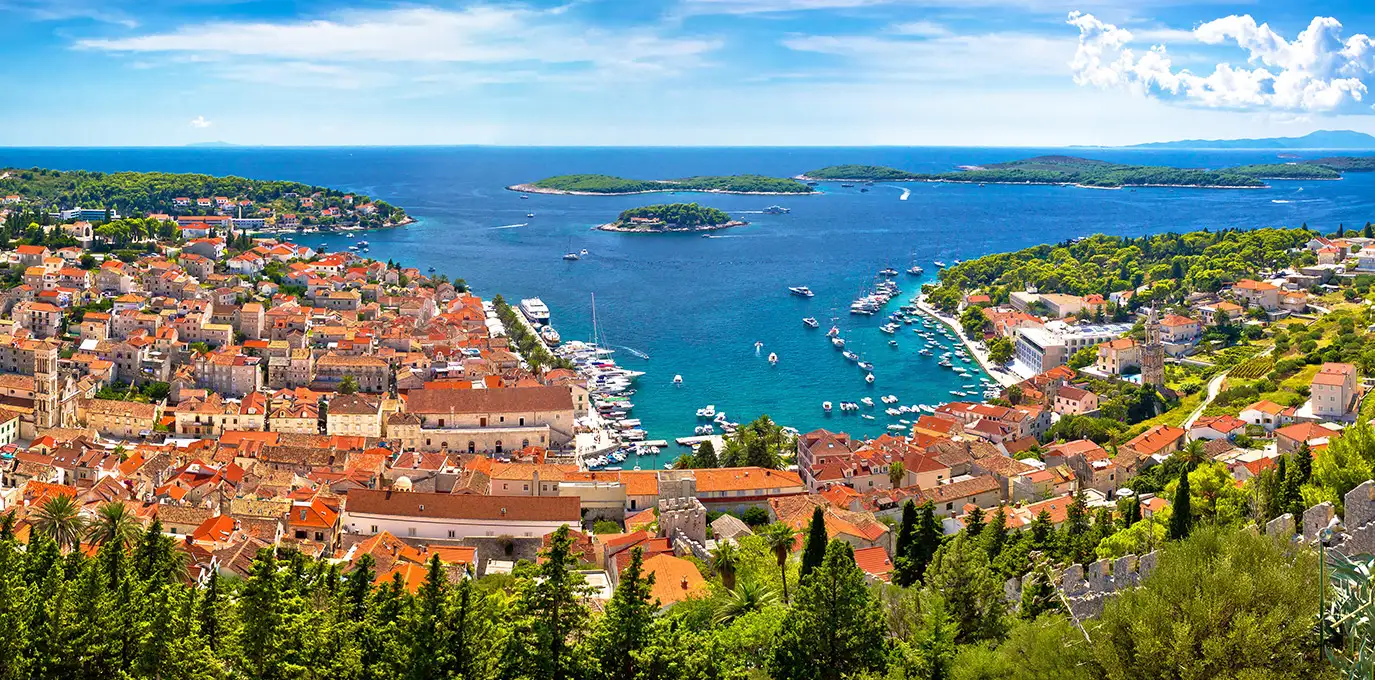
Plamižana (Pakleni otoci) - The oldest and most famous Hvar’s resort and the nautical marina. Palmižana (Vingradišće lagoon precisely) is a spacious lagoon with a shallow and sandy beach. It is surrounded by a thick, pine forest, fragrant heather and rosemary bushes, and various, exotic plants. There are several restaurants and B&Bs. Palmižana can be accessed by the organized, regular boat connection from the port of Hvar.
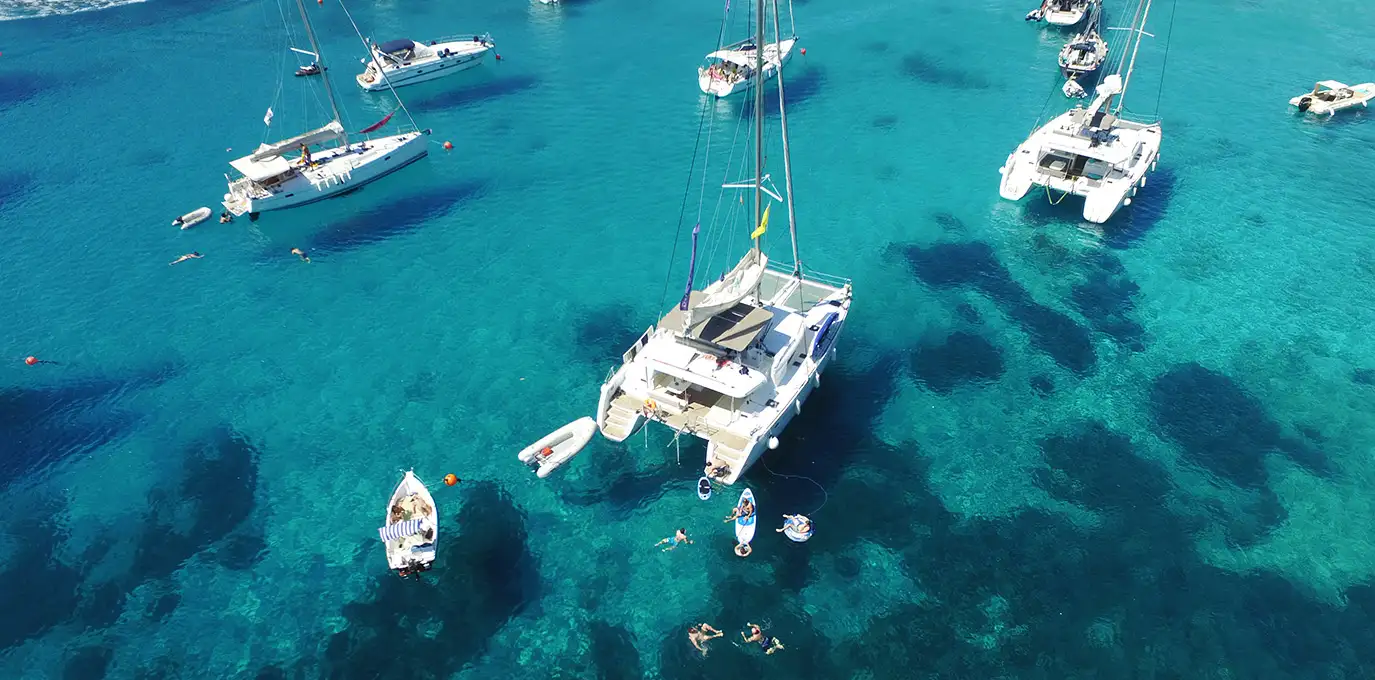
Hvar is a unique blend of luxurious Mediterranean natural surroundings, layer upon layer of a rich cultural and historical heritage, and sophisticated tourism. Located in picturesque natural surroundings on the south side of the island, surrounded by mighty medieval walls, magical fields, and the scent of lavender, Hvar is a never-ending treasure of monumental heritage, culture, and atmospheres. Its name originates from the word PHAROS - the Greek name for the island of Hvar and the town which was formerly in the place of the present Stari Grad (the Old Town) from which it took over the title as island center in the 13th century. From its castle Španjol, high above the town, majestic views open up over the green Pakleni otoci (the Hell Islands) (ACI Marina Palmižana) and the open sea.
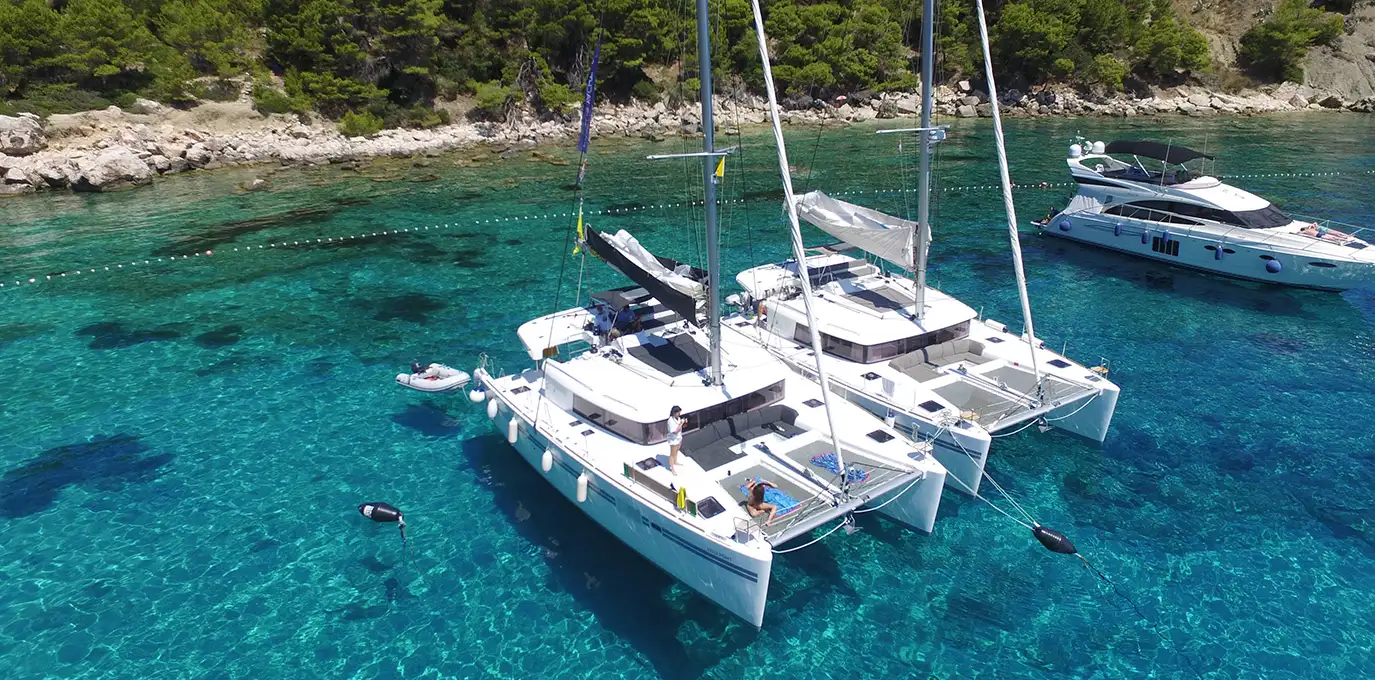
Stari Grad (the Old Town) - Pharos, the oldest city in Croatia, established by the Antique Greeks in 384 B.C., is the historical heart of the island of Hvar, one of the ten most beautiful islands in the world, known for the seductive scent of its lavender fields. The city is situated where the deep bay touches the greenery of the vast fields - the famous Hvar Ager (Starigrad field), which is included in the UNESCO list of World and Cultural Heritage. The most valuable part of the cultural heritage of Stari Grad is Tvrdalj, the fortified Renaissance castle with a fish pond and garden (16th century), which was owned by the famous Croatian poet, Petar Hektorović.
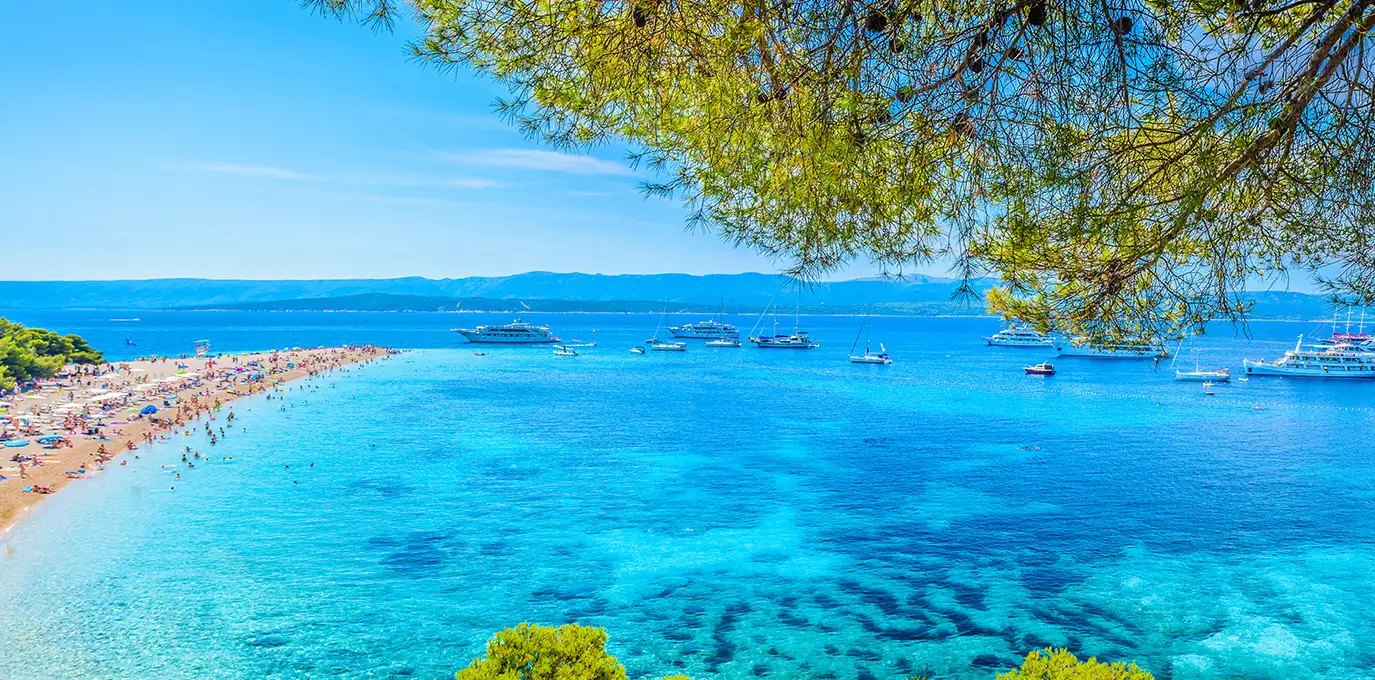
The island of Brač is the highest and third largest island in the Adriatic Sea. The island is well known for its quality stone used to build many palaces. This is the island with the only stone mason school in Croatia. The Zlatni rat beach spreads to the west of Bol and is one of the biggest and most beautiful natural beaches on the Adriatic. Like a tongue stretching almost half a kilometer into the sea, it grows with the drifting deposits of tiny pebbles, changing its shape depending on the wind and the direction of the waves.
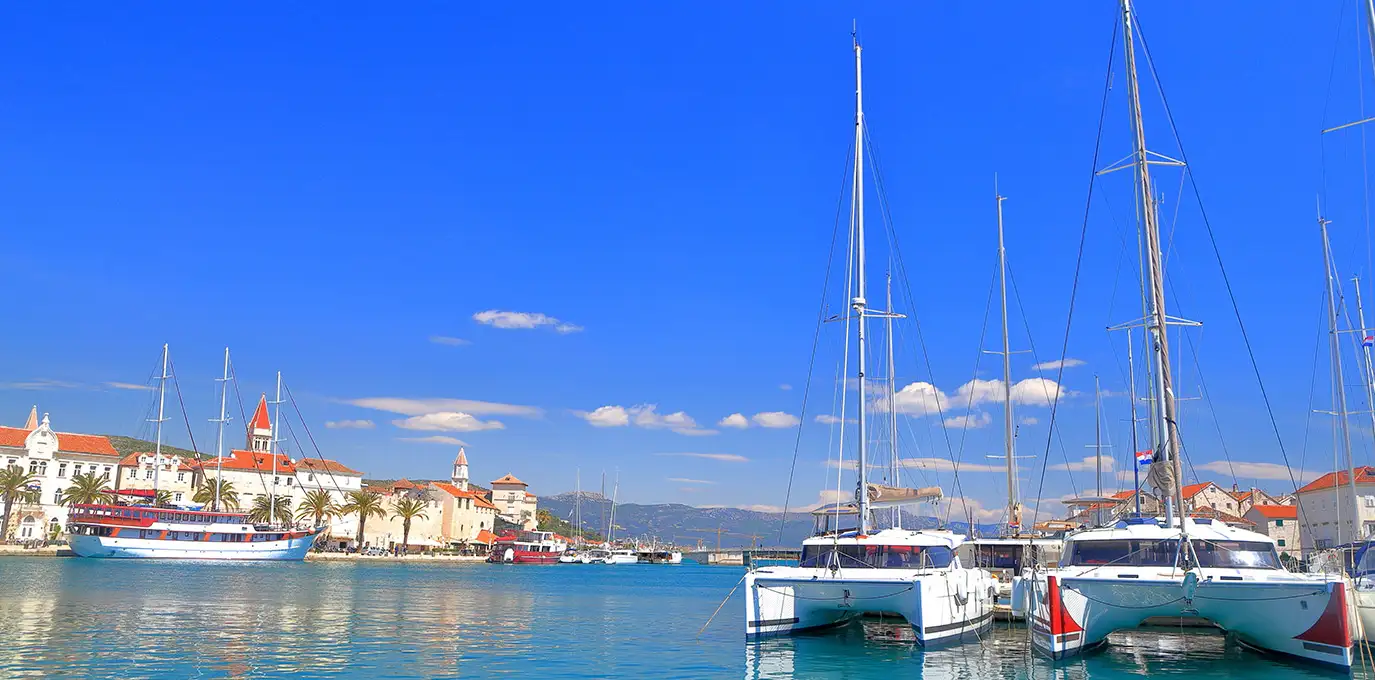
Milna is a town Built with Brač stone, facing the sun and the sunrise, protected from the harsh winds and refreshed by the summer afternoon breeze of the maestral, Milna is a calming haven for both people and boats.
The last day of your journey will take you back to Split. On the way to Split, there are a few little bays worth visiting on the islands of Drvenik and Šolta.
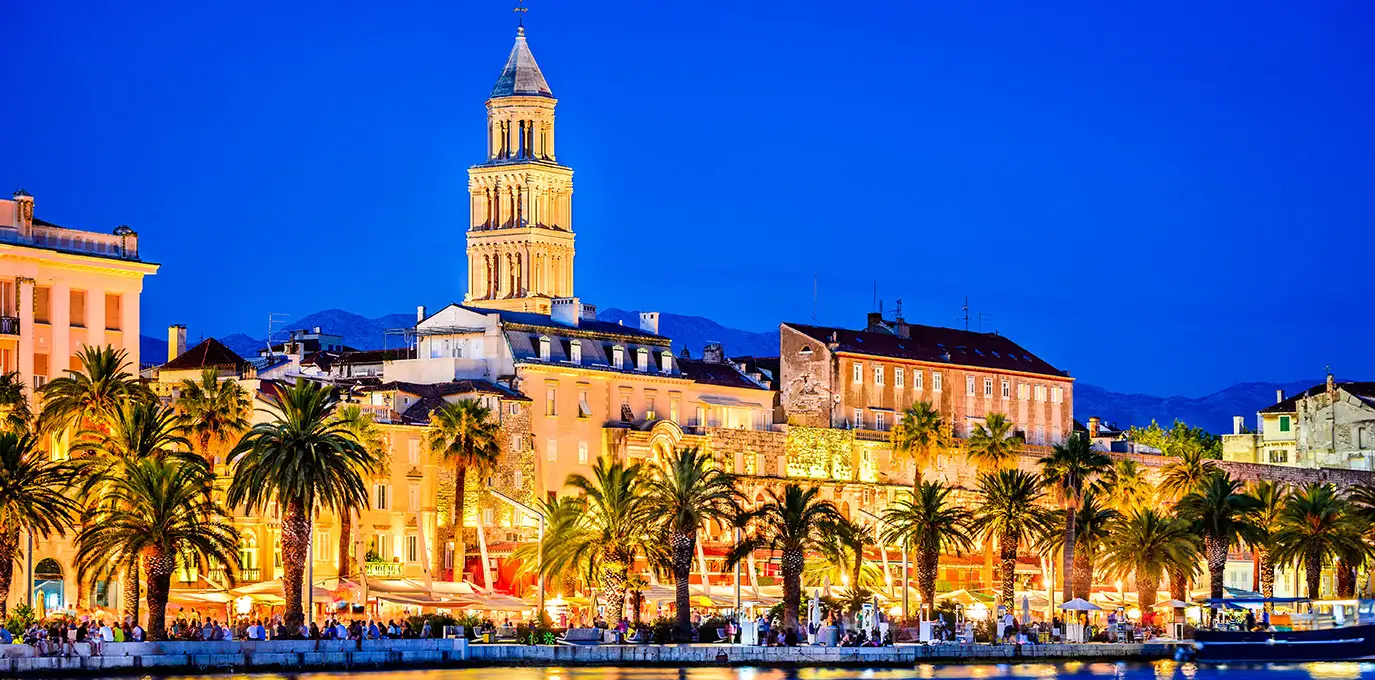
Split: In the evening you should be anchoring your boat in Split ACI marina, the same marina from where you set out. We recommend spending your evening looking around the old town of Split. We do hope that you will be satisfied with our choice of route and we wish you a most enjoyable trip.
Trogir: We invite you to visit Trogir and to see its unique memorial heritage for which it was recorded in the Register of World Heritage of UNESCO in 1997 it is considered the best-preserved Romanic-Gothic town in this part of Europe, its small Dalmatian towns in its surroundings, stunning beaches, and nearby islands.